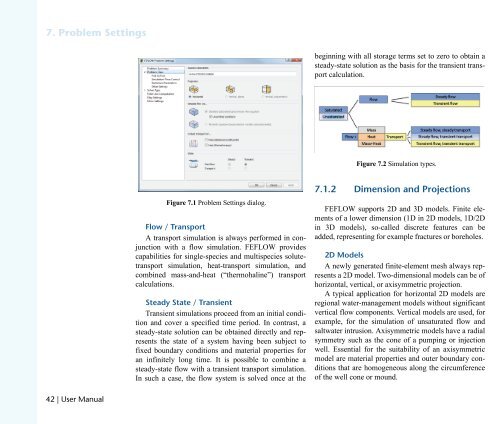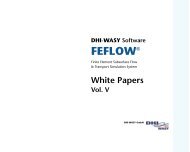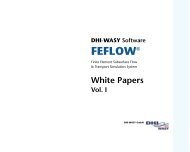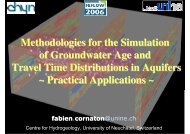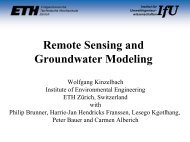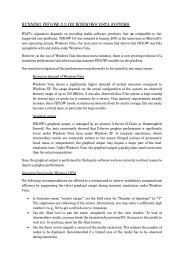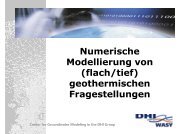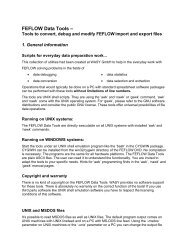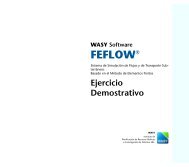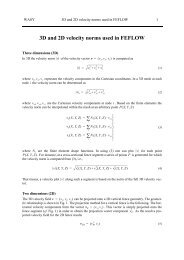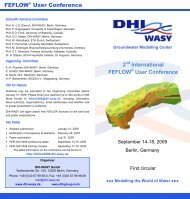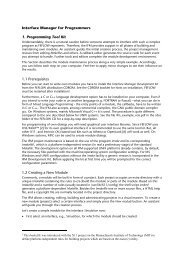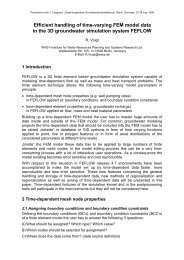DHIJWASv Software FEFLOW 6.1
DHIJWASv Software FEFLOW 6.1
DHIJWASv Software FEFLOW 6.1
Create successful ePaper yourself
Turn your PDF publications into a flip-book with our unique Google optimized e-Paper software.
TK=mêçÄäÉã=pÉííáåÖë<br />
QO=ö=rëÉê=j~åì~ä<br />
Figure 7.1 Problem Settings dialog.<br />
cäçï=L=qê~åëéçêí<br />
A transport simulation is always performed in conjunction<br />
with a flow simulation. <strong>FEFLOW</strong> provides<br />
capabilities for single-species and multispecies solutetransport<br />
simulation, heat-transport simulation, and<br />
combined mass-and-heat (“thermohaline”) transport<br />
calculations.<br />
píÉ~Çó=pí~íÉ=L=qê~åëáÉåí<br />
Transient simulations proceed from an initial condition<br />
and cover a specified time period. In contrast, a<br />
steady-state solution can be obtained directly and represents<br />
the state of a system having been subject to<br />
fixed boundary conditions and material properties for<br />
an infinitely long time. It is possible to combine a<br />
steady-state flow with a transient transport simulation.<br />
In such a case, the flow system is solved once at the<br />
beginning with all storage terms set to zero to obtain a<br />
steady-state solution as the basis for the transient transport<br />
calculation.<br />
Figure 7.2 Simulation types.<br />
TKNKO aáãÉåëáçå=~åÇ=mêçàÉÅíáçåë<br />
<strong>FEFLOW</strong> supports 2D and 3D models. Finite elements<br />
of a lower dimension (1D in 2D models, 1D/2D<br />
in 3D models), so-called discrete features can be<br />
added, representing for example fractures or boreholes.<br />
Oa=jçÇÉäë<br />
A newly generated finite-element mesh always represents<br />
a 2D model. Two-dimensional models can be of<br />
horizontal, vertical, or axisymmetric projection.<br />
A typical application for horizontal 2D models are<br />
regional water-management models without significant<br />
vertical flow components. Vertical models are used, for<br />
example, for the simulation of unsaturated flow and<br />
saltwater intrusion. Axisymmetric models have a radial<br />
symmetry such as the cone of a pumping or injection<br />
well. Essential for the suitability of an axisymmetric<br />
model are material properties and outer boundary conditions<br />
that are homogeneous along the circumference<br />
of the well cone or mound.


